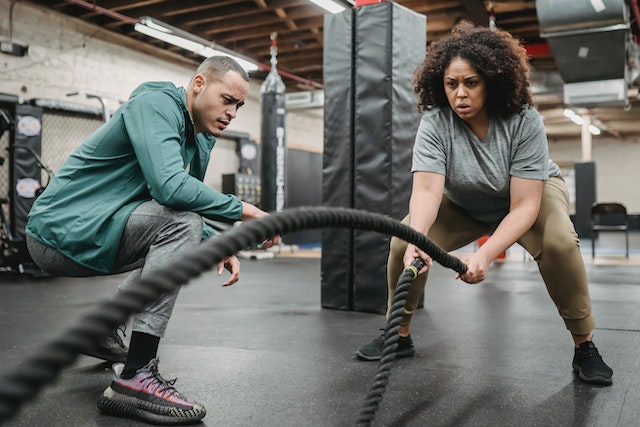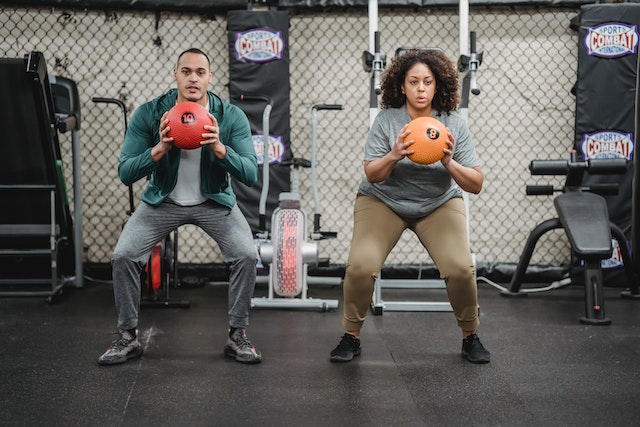As a personal trainer, you get to work with different people in the gym regularly. You’ll usually be in charge of their training regimen and personal growth.
However, you can run into trouble if the person you are training gets injured under your supervision. To avoid this issue, you need to make them sign a liability waiver before taking them on as clients.
In this article, we’ll discuss liability waivers for personal trainers. Continue reading to learn how to write them.
What Is a Personal Training Liability Waiver?
A personal training waiver (also known as a personal training release of liability) is a document that states your client’s willingness to relinquish the right to pursue legal action against you for injuries sustained during workouts.

Why Do Personal Trainers Need a Liability Waiver?
Personal trainers should have waivers of liability when working with individual clients to avoid liability if someone suffers physical injury during their sessions.
People in the personal training business also need waivers to exempt themselves from responsibility if their client falls ill due to a change in diet or workout intensity. For example, you can avoid a lawsuit for telling your client to drink a supplement that contains a substance they are allergic to.

Also, personal training waivers signify that the client has permitted the trainer to establish an accepted or specified form of touch. This will protect you from frivolous lawsuits and scandals.
If you have a client with little experience in gym activities, you should present them with a liability waiver to help them understand the risk they are willingly taking on. It also shows that you’ve provided ample information to help your client decide if training with you is a good idea.
While signing the waiver form, you will also get to know your client’s health conditions, including those which might affect their performance. Eating disorders, heart conditions, and allergies are some medical conditions to bear in mind.
Does a waiver always work?
Are liability waivers always enforceable? Presenting a waiver to your client doesn’t provide you with an ironclad defense if things go terribly wrong during a workout session — especially if your negligence causes the mishap.
Here are some cases where your negligence makes the personal training waiver void:
- Refusing to offer first aid
- Working with an expired license
- Refusing to fix broken equipment
- Providing an unsafe workout environment, e.g., wet floors
- Forgetting or neglecting to mention the risks of any activity
- Touching the client without their consent
- Ignoring the client’s pre-existing condition when pushing them to perform an activity
Any activity where you do not fulfill your duty of care to the client will make you culpable for their injuries or health mishaps.
How to Write a Liability Waiver for Personal Training
You can download a waiver template for your practice and get clients to sign. Since you won’t have control over the basic contents of the downloaded agreement, you should modify it accordingly, creating a liability waiver that covers every aspect of your personal training. You could also make tweaks to accommodate clients with unique needs.
Key components of a personal training waiver of liability
Here are the main contents of a personal training release:
- The names and legally-binding signatures of the client and trainer.
- A clause that clearly articulates the risks involved in a training program.
- A hold harmless clause that explains that signing the document means the client is relinquishing their right to sue.
- The waiver jurisdiction that specifies the governing body of the trainer’s location. This component is essential for avoiding legal precedents in areas outside your locale.
- A COVID-19 clause that exonerates you from responsibility if your client contracts the virus while training with you. You should also outline the anti-COVID measures you’ve taken to protect your clients.
- A medical treatment clause that specifies who pays for any possible medical procedures.
- A clause for minors to be cosigned by their parents or legal guardian. This is a necessity when working with clients under 18.
You can also add other clauses and conditions to the agreement to cover as much as possible.
How to Protect Yourself as a Personal Trainer
The best way to avoid legal trouble is by making sure your clients sign waivers before they start working out with you. Here are other ways to protect yourself:

- Update your personal trainer certificates and licenses.
- Explain the risks of every activity verbally before the start of any exercise.
- Consult with the parents and guardians of clients under 18 to ensure they have given express permission.
- Conduct a complete personal assessment even if the client provides a clean bill of health. If you have doubts about their ability to perform a task, ask them directly.
- Make sure the waiver is in the client’s native language. Otherwise, find someone to help them translate.
- Create a safe space for clients to be able to communicate when something hurts or doesn’t feel right.
- Don’t force clients to sign the waiver. Instead, explain to them why signing is necessary for their safety.
- Get an insurance policy and keep it up to date. This will keep you covered in cases where a liability release is ineffective.
- Use a tool like PandaDoc Waivers to store and sign your waivers. This secure tool will help you keep track of all agreements with clients in one safe online storage location.
Conclusion
Working as a personal trainer involves getting your clients to exert themselves physically, which could pose risks of bodily injury. To avoid liability, you need to show your clients a waiver containing a clear explanation of the risks they face. You also need to assess their medical history before crafting their workout program. Most importantly, you must create a safe physical space and working environment for your clients.


